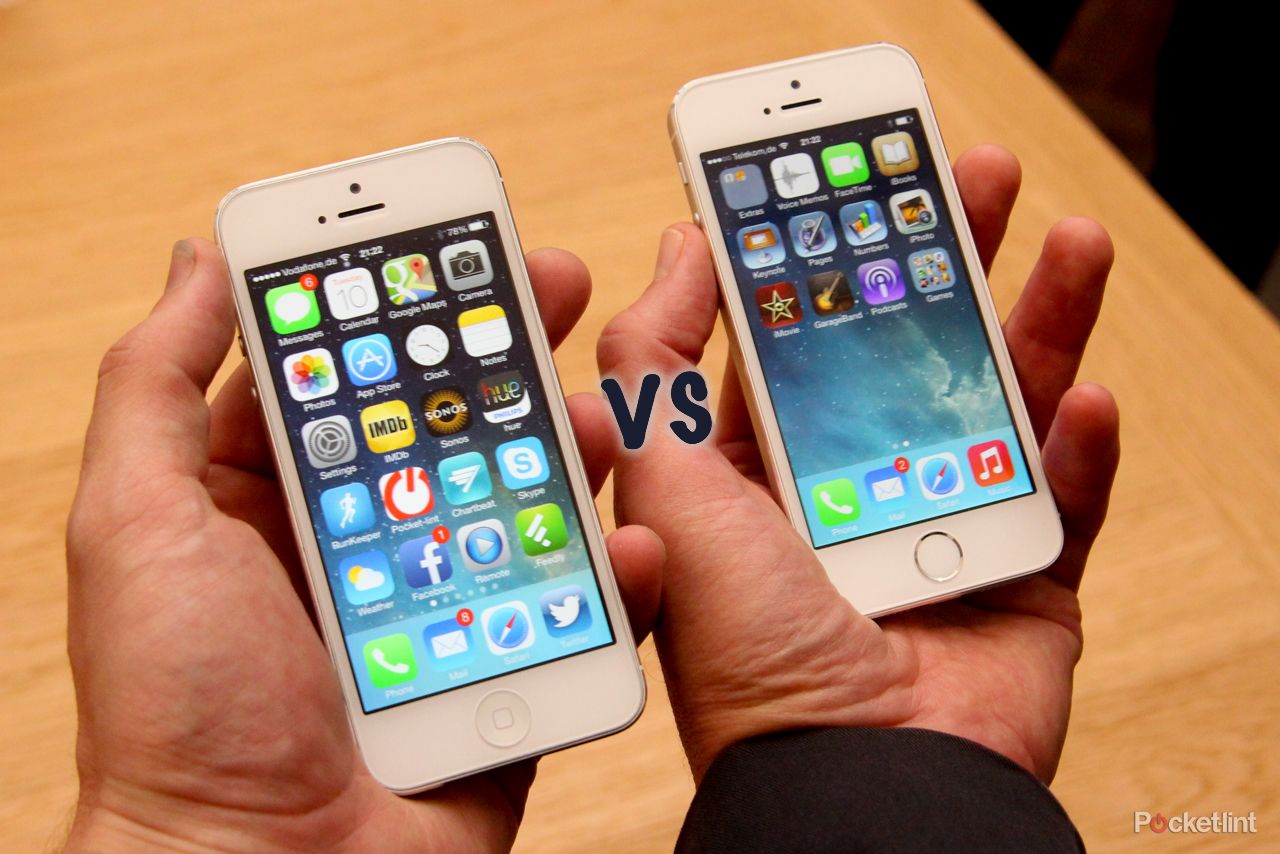After months of anticipation, rumours and speculation, Apple has announced its next generation of iPhone models - the iPhone 5S and iPhone 5C.
But what will you gain if you are looking to upgrade to the most premium model in the Apple iPhone family? We take a look at what's new about the iPhone 5S and how it separates itself from its now discontinued predecessor, the iPhone 5.
Display: it's the same
The iPhone 5 took a jump in screen size from the iPhone 4S, and comes in at 4-inches with a resolution of 1136 x 640 and a pixel density of 326ppi. Nothing's changed here where the iPhone 5S is concerned - it stays the same in terms of size and resolution.
New fingerprint sensor
The iPhone 5S is the same light and thin design as its predecessor too. Weighing in at 112g and measuring 7.6mm deep it's the external look that's the biggest change: it's available in gold, silver and space grey, compared to the black and silver options of the original iPhone 5.
The main difference in the 5S is the addition of the much speculated fingerprint sensor. Touch ID has been built into the home button with a stainless steel detection ring around it to detect that your finger is on the button. The rectangle mark to the centre of this button - as in all earlier Apple iPhones - has been removed and instead replaced by a sensor that's 170 microns thin, with a 500ppi resolution and has 360-degree readability for your digits.
It's certainly a great addition from a security point of view. You will be able to make iTunes purchases using your finger as authentication, and it will be able to read multiple fingerprints.
Camera upgrade
When it comes to the camera, the iPhone 5 sported an 8-megapixel rear camera and a 1.2-megapixel front camera. It also came with a Hybrid IR filter, dynamic low-light mode and sapphire crystal cover.
The iPhone 5S takes this and expands it, but not in resolution terms. It's 8-megapixels still, but the sensor is larger and so should deliver better quality images.
There's a bunch of new features too: a True Tone flash is designed to solve the problem of clashing colour temperatures by using one of two filtered outputs. Ideal for skin tones. Apple has also introduced a Burst mode, which allows you to take up to 10fps if you hold the shutter button down.
READ: iPhone 5S camera: new sensor and lens, can Apple keep Nokia at bay?
The new camera has a five-element Apple designed lens with f/2.2 aperture - a third of a stop brighter than its predecessor in order to let more light in.
You'll also get improved video stabilisation and Slo-mo 720p 120fps video with the iPhone 5S.
Panorama, Face Detection and Autofocus found in the iPhone 5 are still be present on the iPhone 5S. Numbers aside, in a nutshell, it seems you’ll be getting a better camera experience.
Faster, longer-lasting
When the iPhone 5 launched, it brought with it the A6 processor, which gave it a twofold graphics and app-loading improvement compared to the iPhone 4S.
It’s time to double up again as the iPhone 5S brings with it a new 64-bit A7 chip, meaning it's a purported two times faster again - both in CPU and graphics terms. That's 40 times as fast as original iPhone.
When it comes to battery life, the iPhone 5 could standby for 225 hours. You'd get 8 hours of 3G browsing time and 10 hours of video playback. The iPhone 5S improves on this with a 250 hour standby time, but remains the same for 3G browsing and video playback.
4G, but limited UK networks
Just like the iPhone 5, the iPhone 5S will be sticking with the Lightning connector launched last year.
Apple ditched the 30-pin connector with the iPhone 5 went for a specially designed 8-pin connector. The connector is reversible, so you can plug things in both ways. It is also much faster and more durable.
Connectivity-wise there will be no change, as the iPhone 5S takes on board Bluetooth 4.0, LTE and Wi-Fi 802.11a/b/g/n. However, the iPhone 5S will also be compatible with Vodafone's 4G network, as well as EE. The iPhone 5 only supported EE.
But that's still limited. No O2 support from the latest device in the UK.
READ: Apple iPhone 5S and iPhone 5C will only work on Vodafone and EE 4G networks
Pricing
Just as you'd expect, the iPhone 5S will be more expensive than the iPhone 5 was before it was replaced by the iPhone 5C.
The 16GB iPhone 5 cost £529, while the 32GB cost £599 and the 64GB set you back £699. The new iPhone 5S will come in at £549 for the 16GB, £629 for the 32GB and £709 for the 64GB. There's no sign of the much-rumoured 128GB model.
READ: Apple iPhone 5S: Release date and where can I get it?
The iPhone 5S will be available in stores in the UK, US and many other territories around the world from 20 September.

